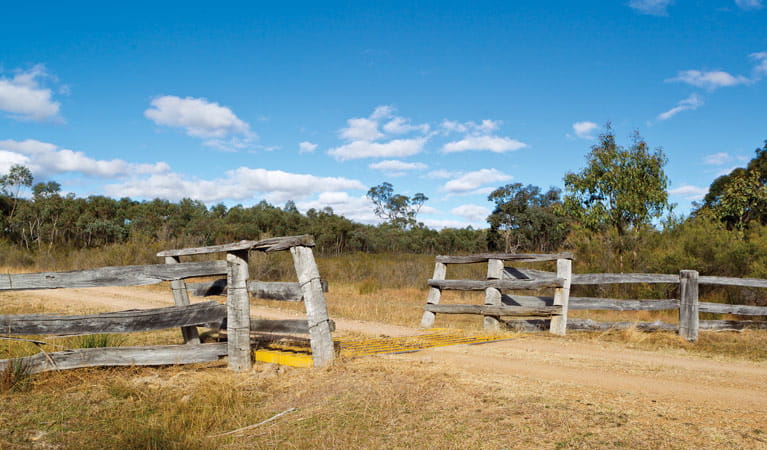Kings Plains National Park
Overview
Kings Plains National Park, on the New England Tablelands, offers excellent bushwalking, swimming, seasonal waterfalls and camping for the adventurous traveller.
Read more about Kings Plains National Park
Set among the rolling farmlands of New England Tablelands, Kings Plains National Park is a destination for the adventurous, independent traveller. Bushwalking along the creek, with its pools and rapids, to Kings Plain Falls is the park’s biggest attraction. Hiking or mountain biking along the park’s 15km of management trails takes you through grassy and shrubby woodlands, and a rare forest of McKies stringybark.
Along the way, those into birdwatching and wildlife-spotting will be in for a treat – you can expect to see all sorts of birds and wildlife, from brightly coloured turquoise parrots and crimson rosellas to eastern grey kangaroos and swamp wallabies.
Take a picnic and relax on the edge of one of the waterholes, or pack your camping gear and stay for a couple of days. The campground alongside Kings Plains Creek is a peaceful retreat from city life.
Local alerts
For the latest updates on fires, closures and other alerts in this area, see https://www.nationalparks.nsw.gov.au/visit-a-park/parks/kings-plains-national-park/local-alerts
Contact
- in the Country NSW region
Kings Plains National Park is always open but may have to close at times due to poor weather or fire danger.
-
-
Glen Innes office
02 6739 0700
Contact hours: Monday to Friday, 8.30am to 4.30pm. - 68 Church Street, Glen Innes NSW 2370
-
Email: npws.ntab@environment.nsw.gov.au
-
Glen Innes office
Visitor info
All the practical information you need to know about Kings Plains National Park.
Map
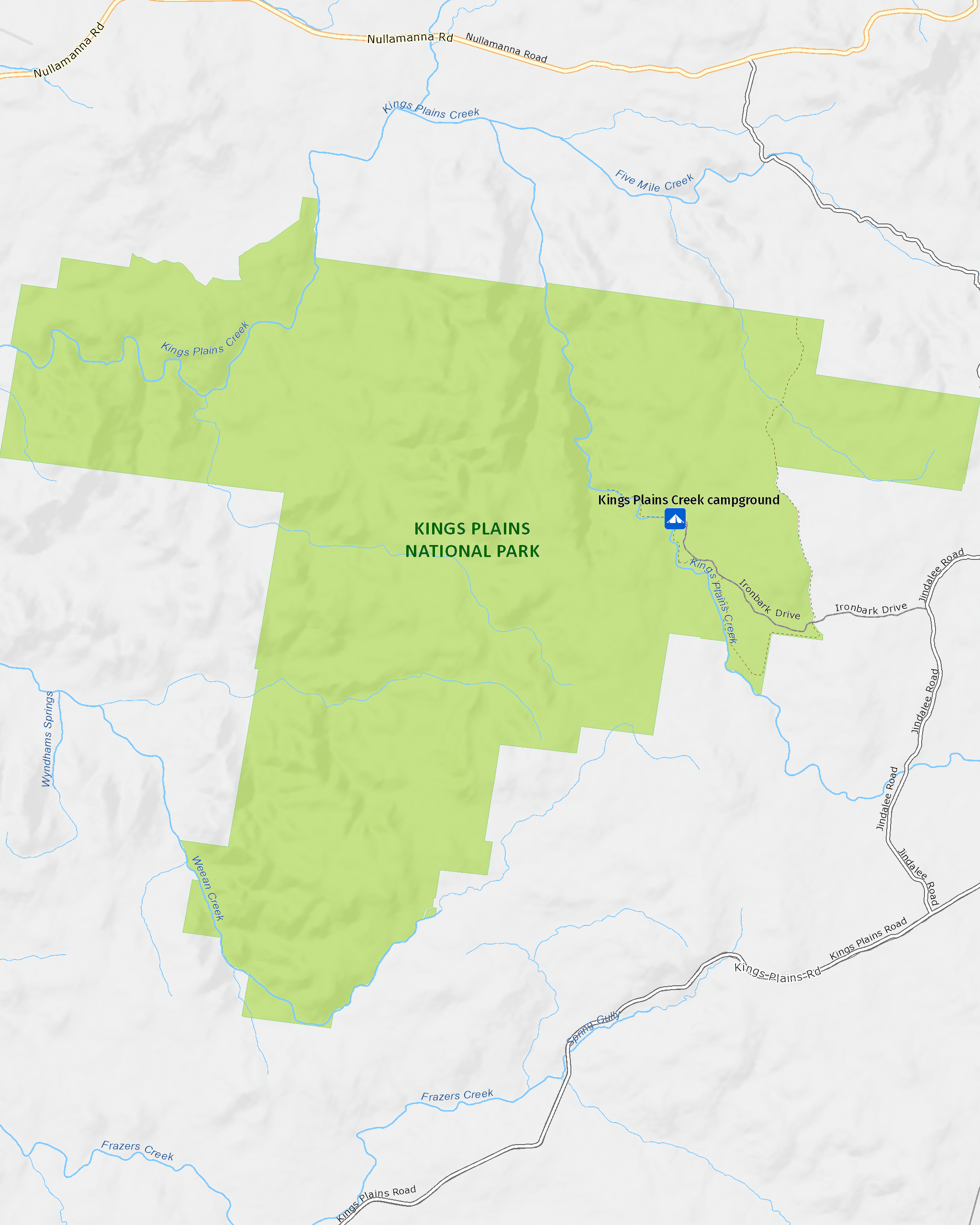
Map legend

Getting there and parking
Get driving directions
From Glen Innes:
- Follow the signs from Glen Innes (off Gwydir Highway west of town).
- Following the signs, turn right onto Kings Plain Road. The final 25km of road is unsealed.
Parking
- Kings Plains Creek campground See on map
By bike
Check out the Bicycle information for NSW website for more information
By public transport
Kings Plains National Park is not accessible by public transport.
Best times to visit
There are lots of great things waiting for you in Kings Plains National Park. Here are some of the highlights.
Autumn
Pleasant days make for great walking conditions around the park.
Spring
Wildflowers come into bloom across the park and attract many bird species, making this a great time for birdwatching.
Summer
It can get very hot at this time of year, so the shaded campsites beside the creek are great for escaping the heat.
Winter
Now's the perfect time to relax by a cosy campfire in the beautiful natural surroundings the park has to offer.
Weather, temperature and rainfall
Summer temperature
Average
18°C and 32°C
Highest recorded
41.2°C
Winter temperature
Average
2°C and 20°C
Lowest recorded
–6.3°C
Rainfall
Wettest month
January
Driest month
June
The area’s highest recorded rainfall in one day
160mm
Facilities
Toilets
Picnic tables
Barbecue facilities
Maps and downloads
Prohibited
Pets
Pets and domestic animals (other than certified assistance animals) are not permitted. Find out which regional parks allow dog walking and see the pets in parks policy for more information.
Smoking
NSW national parks are no smoking areas.
Nearby towns
Inverell (45 km)
Go fossicking for sapphires and other gems at several places around the city. Grab a map of local fossicking sites from the visitor information centre and try your luck.
Glen Innes (49 km)
Set in the most prolific sapphire region of Country NSW, Glen Innes hosts the annual Minerama Fossicking and Gem Show and the annual Australian Celtic Festival, and is home to the Australian Standing Stones.
Guyra (109 km)
Fishing in one of Guyra's numerous and beautiful streams is a great way to relax and get back to nature. You might land a big trout, too! If you're looking for more active pursuits, you're within easy reach of a number of scenic national parks, where rock climbing, kayaking horseriding and bushwalking are just some of your options.
Learn more
Kings Plains National Park is a special place. Here are just some of the reasons why:
Fascinating recent history
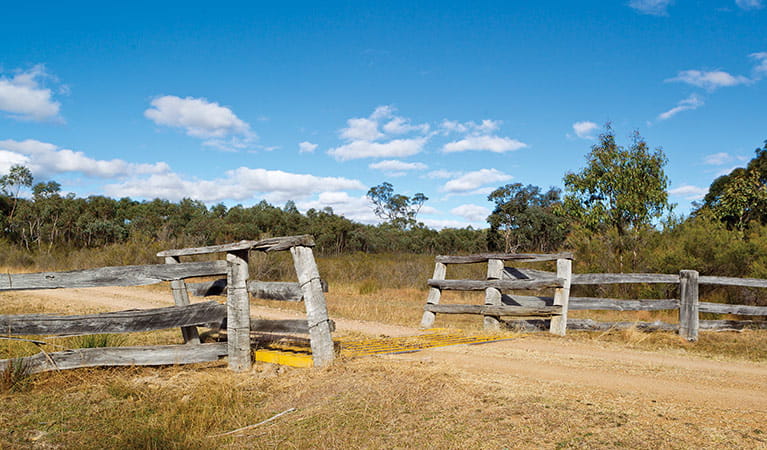
When he rode through the region in 1827, explorer and botanist Allan Cunningham found the first European settlers working the land. Kings Plains National Park was once part of the vast King Plains Station, established in 1838, and for many years an important cattle-grazing property. Today, you can still find evidence of early grazing and mining activity throughout the park, including the remains of huts, mining pits and mullock heaps.
Ancient cultures
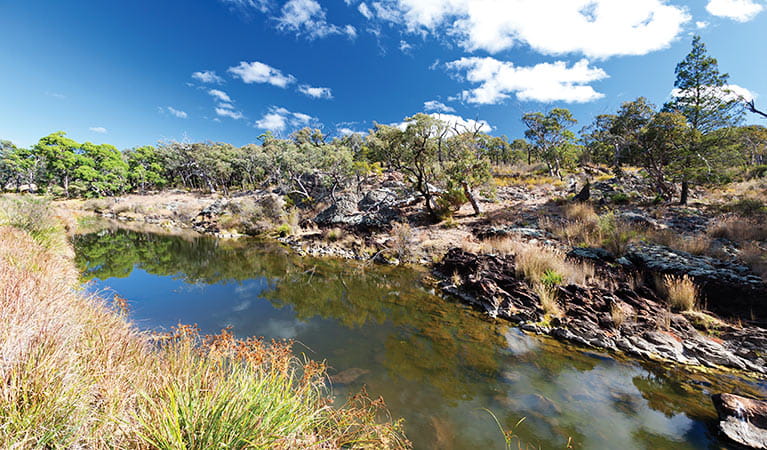
Kings Plains National Park is part of the traditional land of the Ngarrabul Aboriginal people, whose tribal totem is the koala, which they call 'boor-bee'. An Aboriginal person's totem is an animal or plant with a powerful spiritual connection and is never killed or eaten by that person, since it could be an ancestor. For thousands of years, this tradition has ensured koalas were conserved in this area.
All creatures, great and small
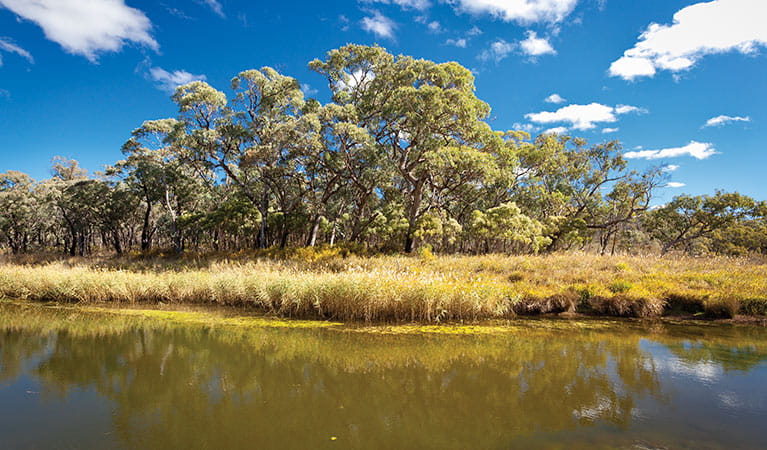
Wildlife is abundant in the park, and most easily spotted at dawn or dusk. Keep your eyes peeled for eastern grey kangaroos, wallaroos, swamp wallabies, red-neck wallabies and koalas. The shy platypus also lives along the creek. The park is home to more than 80 species of birds, from beautiful king parrots and yellow-tailed black cockatoos to wedge-tailed eagles and the rare peregrine falcon. Near the rivers, look for cormorants, tall white-faced herons and azure kingfishers. Stands of ironbark, cypress pine and yellow box all feature in the open woodland of Kings Plains National Park. There's even a rare patch of McKie's stringybark, a tall tree that flowers white between March and May. You'll also find uncommon and rare plant species - the grey guinea flower and the yellow-flowering Kings Plain homoranthus - in the park's heath areas. Wildflowers are at their best during spring.
Education resources (1)
What we're doing
Kings Plains National Park has management strategies in place to protect and conserve the values of this park. Visit the OEH website for detailed park and fire management documents.

